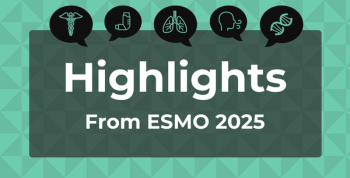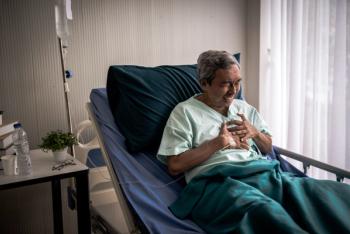
AI-Assisted Mammography, Practical Applications: Sarah Verboom, PhD Candidate
Artificial intelligence (AI) can enhance breast cancer screenings by prioritizing cases, allowing radiologists to focus on complex diagnoses and improve detection rates, explained Sarah Verboom of Radboud University Medical Center.
Captions are auto-generated.
Artificial intelligence (AI)–assisted mammograms were found to reduce radiologist workload by approximately 40% when completely certain of their assessment of the screening. The study
Overall, the AI model met expectations when detecting malignancies; however, when the AI was forced to operate at the specificity of radiologist single and double readings (98.2% and 98.3%, respectively), the sensitivity was significantly lower (62.1% and 61.6%, respectively).1 The AI interpretation model was designed to access screenings similar to that of a multistep process to deduce examination-level prediction. The 3 steps included detecting regions of interest, region classification, and generating an examination-level conclusion.
The uncertainty metric was based on the entropy of the probability of malignancy (POM) outputs. The model would assign each region of the breast a POM score and then evaluate the certainty of its predictions for each score. A higher entropy meant the AI was more uncertain than not, and under the guise of this metric, researchers observed a split in confidence where the AI was uncertain in 61.9% of the 41,471 examinations analyzed in the study.
Regarding detection and recall rate, the model did not stray from that of the double radiologist readings. The radiologist’s detection rate was 6.6 per 1000 examinations, and the recall rate was 23.7 per 1000 examinations. The AI model detection rate was 6.7 per 1000 and 23.9 per 1000, respectively. Using these rates, the AI would have recalled 19% of women without radiologist intervention, which might strain patient trust, as many women prefer to have at least one radiologist review their screenings as opposed to solely AI.2 However, according to Verboom, the prevalence of these cases is very rare and based on the certainty of the AI model, so it is unlikely that an examination causing concern would be assessed solely by an AI model without a radiologist's intervention.
Overall, the hybrid reading strategy—AI certainty assessment combined with double radiologist analysis—reduced radiologists’ workload to 6.19%.2
“An optimized hybrid strategy could involve the AI-only interpretation of low POM examinations with high certainty, whereas all other examinations are interpreted by radiologists,” the study authors concluded. “In this way, the AI interpretation would be used only when it is performing with high accuracy, because examinations for which AI interpretations were classified as certain had a higher AUC than examinations for which assessments were classified as uncertain.”
References
1. Verboom SD, Kroes J, Pires S, Broeders MJM, Sechopoulos I. AI should read mammograms only when confident: a hybrid breast cancer screening reading strategy. J Am Coll Radiol. Published online August 19, 2025. doi:10.1148/radiol.242594
2. Ongena YP, Yakar D, Haan M, Kwee TC. Artificial intelligence in screening mammography: a population survey of women’s preferences. J Am Coll Radiol. 2021;18(1Pt A):79-86. doi:10.1016/j.jacr.2020.09.042
Newsletter
Stay ahead of policy, cost, and value—subscribe to AJMC for expert insights at the intersection of clinical care and health economics.







































